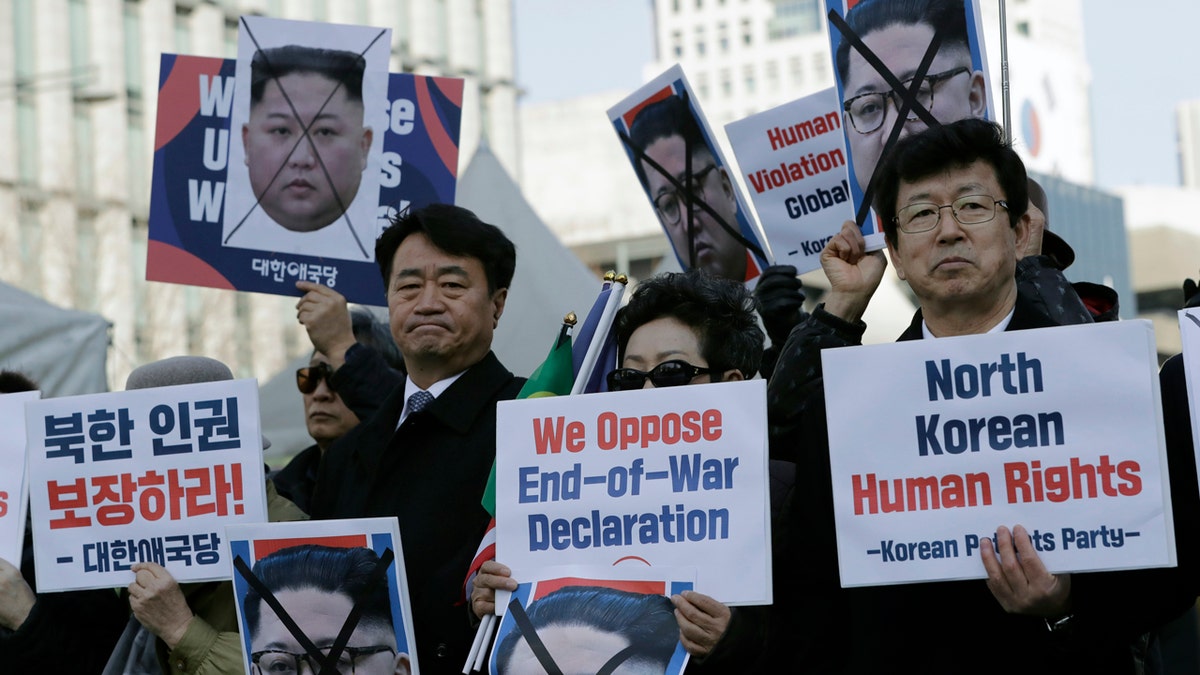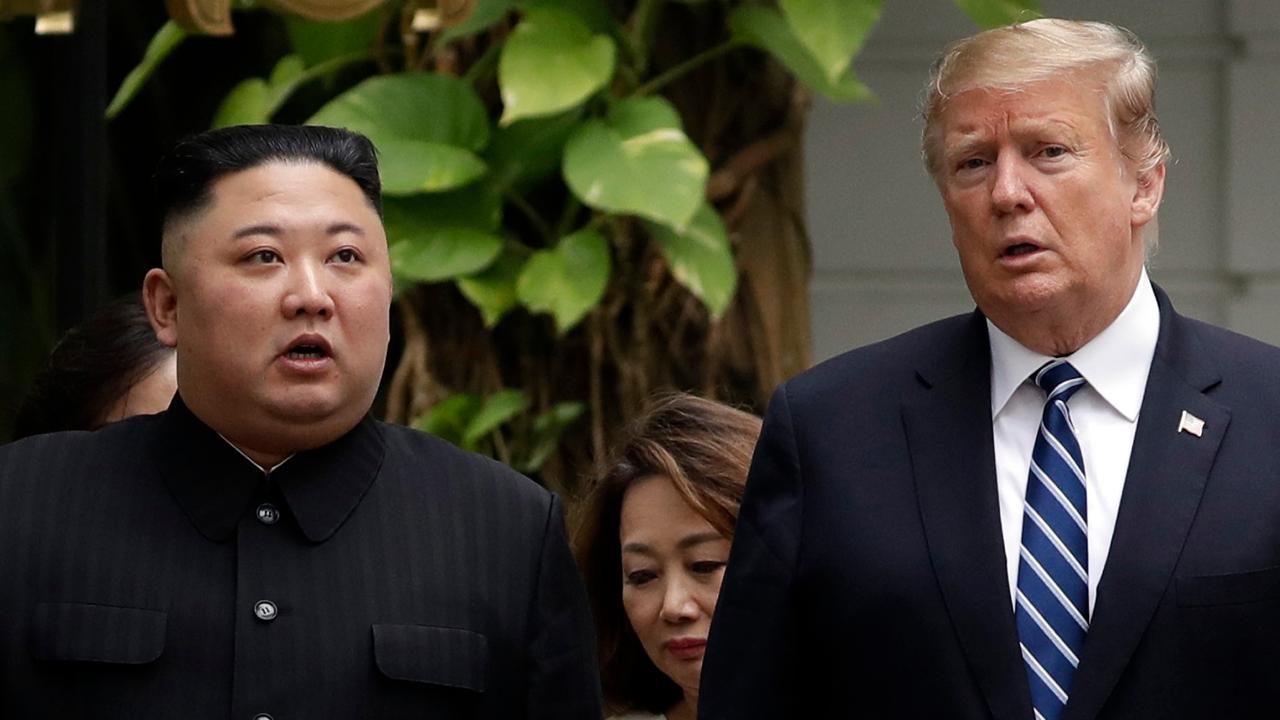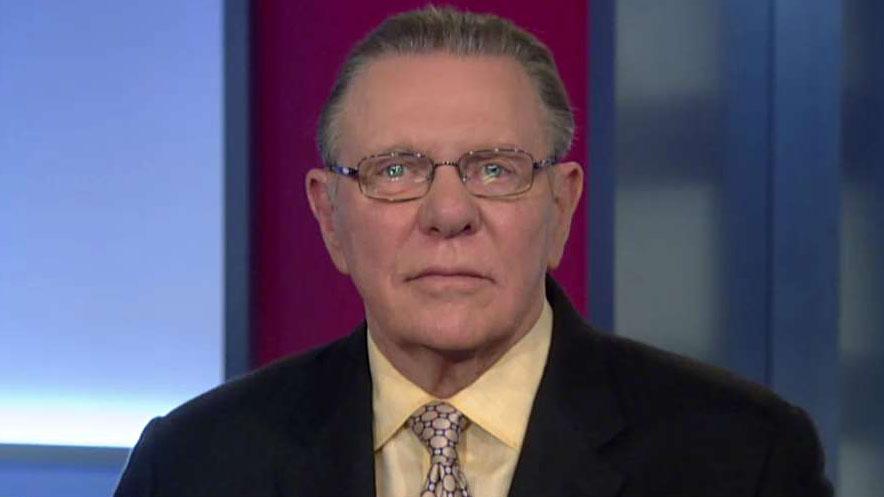Eric Shawn: China and the 'free North Korea' prosecution
Lee Wolosky calls for the U.S. to drop charges against anti-regime activists.
Over 300 sites in North Korea have been identified as locations of public executions carried out by the hermit kingdom, sometimes drawing hundreds of forced spectators as the part of a campaign to intimidate citizens, according to a report released Tuesday by a human rights group.
The South Korean-based Transitional Justice Working Group said interviews with 610 North Korean defectors over four years helped locate the sites with satellite imagery for its "Mapping the Fate of the Dead" report.
"Almost all of the state-sanctioned killings reported were public executions by firing squad," the report's authors noted. "Brief 'trials' almost always occur on the spot immediately before a public execution, where charges are stated and a sentence given without legal counsel for the accused."
NORTH KOREA SUSPENDS MASS GAMES AFTER KIM JONG UN CRITICIZED FAMOUS SHOW
The group didn't reveal the exact locations of the 323 sites because it's worried that North Korea will tamper with them, but said 267 of them were located in two northeastern provinces near the border with China, the area where most of the defectors who participated in the study came from.
"Public executions most often occur in places such as river banks, open spaces and fields, market places, hills/mountains, sports grounds and school grounds," the study's authors noted. "The size of the assembled crowd can vary, often in the hundreds of people, but a number of interviewees described seeing crowds of 1,000 or more people."
Among the most publicly cited offenses for the death penalty include: murder or attempted murder, stealing copper, human trafficking, stealing cows and other forms of property, and economic crimes.
Residents and family members of those sentenced are also forced to attend the killings.
"Interviewees told us the bodies of individuals killed by the regime are not usually returned to family members, nor are the burial locations revealed to families," the authors said. "Most North Korean citizens continue to follow traditional burial practices where scarce resources allow. However, the inability to access information on the whereabouts of a family member killed by the state, and the impossibility of giving them a proper burial, violates both cultural norms and the 'right to know.'"
The group also said it documented three sites where people died while in detention and 25 sites where the dead were allegedly disposed of by the state. Bodies of people killed in executions are often dumped in mountainous areas, buried in the ground without markers, or thrown into a gorge or ravine, the report said.
Some defectors reported incidents in the mid-2010s where authorities used hand-held metal detectors to search and confiscate mobile phones from witnesses before a public execution to prevent them recording the events, which the report's authors said showed the government's concern about information getting outside the country.
Last month, South Korean media reported that the North executed five officials for their part in the failed second summit between President Trump and Kim Jong Un.
Transitional Justice said it also found official locations that may have documents or other evidence related to the killings.

In this Feb. 26, 2019, file photo, South Korean protesters and North Korean defectors hold portraits of North Korean leader Kim Jong Un. (AP Photo/Lee Jin-man, File)
The group noted that the findings weren't definite because t doesn't have direct access to North Korea and cannot visit the sites defectors told it about. Ethan Hee-Seok Shin, one of the report's authors, also said interviews with defectors suggest that public executions in North Korea are becoming less frequent, although it's unclear whether that's because more people are being executed in secret.
KIM JONG UN'S HALF-BROTHER WAS CIA INFORMANT BEFORE HIS ASSASSINATION: REPORT
South Korea's Korea Institute for National Unification, a state-sponsored think tank, expressed similar views on its annual white paper on North Korea's human rights released last week, according to the Associated Press. The institute said the North still uses public executions to provoke fear and control the behavior of its citizens, particularly in city and border areas where crimes are more prevalent.
North Korea didn't immediately respond to the report, but frequently bristles at outside criticism of its human rights record and claims negative assessments are part of U.S.-led pressure campaigns meant to tarnish the image of its leadership and destroy the country's political system.
In a report to the United Nations Human Rights Council in May, North Korea said it "consistently maintains the principle of ensuring scientific accuracy, objectivity and impartiality, as well as protecting human rights in dealing with criminal cases."
CLICK HERE FOR THE FOX NEWS APP
A 2014 United Nations report on North Korea's human rights conditions, however, said state authorities carry out executions, "with or without trial, publicly or secretly," in response to political and other crimes that are often not among the most serious offenses. While public executions were more common in the 1990s, North Korea continues to carry them out for the purpose of instilling fear in the general population, the report said.
The new report said its findings show arbitrary executions and extrajudicial killings under state custody have continued under the rule of Kim Jong Un despite international criticism over how North Korea supposedly applies the death penalty without due judicial process.
Since assuming leadership in 2011, Kim has executed a slew of members of the North Korean old guard, including his uncle Jang Seong Thaek, who was convicted of treason, and senior officials accused of slighting his leadership.
The Associated Press contributed to this report.























